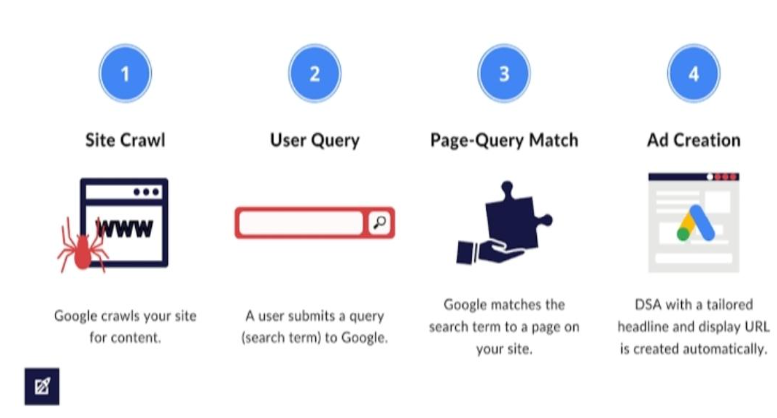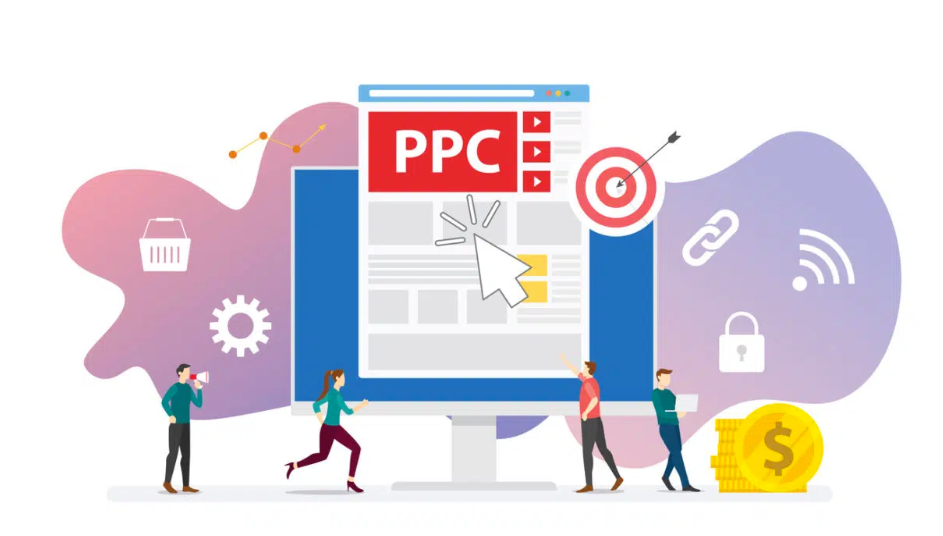Dynamic Search Ads For E-commerce: Why & When To Use
Since the advent of online advertising, marketing professionals have always been looking for effective strategies to market their products and services. While paid advertising such as Youtube Ads and Google Ads still yield their share of traffic to a seller’s website, most online business owners still hardly explore an unpopular advertising campaign. This type of campaign is known as Dynamic Search Ads.
For e-commerce store owners, utilizing Dynamic Search Ads (DSAs) will enable your business to attract customers you never believed you could reach. With this type of ad, customers searching for your products or offers can locate them quickly. The mechanism of this Ad concept will enable you to uncover vital searches that will help your enterprise grow further.
Are you curious to know how the search ads concept works? Do you want to learn how to use them? If yes, then stress no more. In this write-up, we will extensively cover all the essential aspects of Dynamic Search ads, from how to set them up to the rewarding benefits it offers.
What are dynamic search ads?

Dynamic Search Ads are ads format that is displayed based on the content structure of a website. Majorly, web search giant “Google” deploys its crawling search technology to scan an entire website and displays ads to users based on the website contents. By this means, all search terms, display ads, and the content on the landing page are synchronized.
Note: Dynamic Search Ads are more beneficial for advertisers having a unique and well-structured website as Google uses the relevance of website information to target all advertisements -which also helps improve the performance of keyword-related ad campaigns.
Dynamic search ads examples?
When a user searches on Google using keyword terms almost related to the main titles and commonly used phrases on a website, the Google algorithm will then use those titles and search terms to select a specific landing page and generate a unique headline for the website ad.
Dynamic Search Ads: Example 1
You own a fruit juice company in Los Angeles. When random users search Google for “fruit juice firm Los Angeles,” they will see your custom ad with the headline “Fruit juice company -LA.” After they click on the ad, the algorithm redirects users to the landing page of your website related to the fruit juice company in Los Angeles.
Dynamic Search Ads: Example 2
Let’s assume that you own a shoe collection store that sells all types of shoes in different sizes and colors, for men and women, and a searcher types “best female shoes.” In this instance, if your dynamic search ads are active, Google will display a headline for your company ad that reads “Best female shoes.” Once the user clicks, Google redirects the user to the homepage of your website.
How do I create dynamic search ads?
To ensure the appropriate display of your Dynamic Search Ads, you must learn how to create a dynamic ad campaign without errors. Dynamic ads can be made within a new or existing ad campaign. However, creating the ads within the current ad group is advisable for effectiveness.
11 Steps to create a Dynamic Search Ad:
- Log into your Google Ads Account.
- Navigate to the “campaign tab” in the Google Ads account.
- Click the blue cross-sign “+” for the new campaign and choose the ‘new campaign’ button.
- Select the goal and choose “Search” as the campaign type. Alternatively, you can select “Create ad campaign without a goal.”
- Name and accurately configure the chosen campaign. Do not forget to set your timeline.
- Open and navigate to the Dynamic Search Ads settings.
- Enter your preferred website URL.
- Select a specific language and the targeting source.
- Complete all the required campaign information, such as your total budget. Once you are done, proceed to the next stage.
- Click on next and choose the ad group type. Tick the ‘dynamic’ option.
- Review your information. If okay, publish the ad campaign.
Why Use Dynamic Search Ads For E-commerce?

1- Ability to control your ads
For instance, dynamic search ads in Google Ad Manager give you complete control of the entire ad campaign. By so doing, you can display ads based on selected pages on the website. The specific categories (pages) on the website can be linked based on the key phrase in the domain name and titles or keywords on individual pages.
Dynamic search ads prevent the possibility of showing products that are out of stock within a specific category. This process ensures that your targeted customers only offer available products in your online store.
2- Increased web traffic
Dynamic search ads enable your business to gain potential customers via organic search. Because of the well-structured nature of these ads, your ad campaign will bring more traffic and potential leads to your website via Google and other associated search engines. With dynamic ads, you focus less on trying to rank for multiples search terms
3- Displays dynamically generated and relevant headlines with your ads
When the search term of a customer is relevant to your service or product offerings, the Google Ads algorithm will now dynamically create an ad with a precise (clear) headline that will suit (fit) the most relevant page on the website.
3- It saves time
When optimizing your content for different audience segments, the time spent creating landing pages, keyword research, and optimization can be pretty enormous. With dynamic search ads, no need to map various keywords and ad text to every product on the website. This way, dynamic ads will enable you to advertise to an untapped market audience. It helps you save time that you can spend on improving other marketing campaigns.
4- The Displayed URLs are dependent on your latest URL domain
With dynamic search ads, there is no need for you to input your display URL when setting up a new ad campaign. Therefore, the Google Ads algorithm will use the exact domain from your latest (final) URL and set it as the absolute URL of your ads. For instance, if the new URL is www.iam.com/shows/store/credit/rewards, the URL on the ad copy will appear as www.iam.com
When not to use dynamic search ads
Dynamic search ads are a profitable advertising mechanism for most businesses. However, not all business structures will benefit from this ad’s concept. To save time and money, you must know the type of website that will not yield desired results. Here are the salient points to note:
- Dynamic Search Ads will perform best on a website with well-optimized pages where the Google Ads algorithm can identify search terms. Therefore, dynamic ads will not work on a website that doesn’t adhere to Google’s format. Examples of websites in this category include images or flash content sites and websites that require login authentication to access the overall site’s content.
- Dynamic ads perform best on websites with unique content and precise HTML page titles. The page content is majorly used to generate headlines for your campaigns and suggest relevant queries that are unique matches for the page.
- If the content on your website changes more frequently, you shouldn’t implement dynamic search ads. The websites in this category include sites that display daily deals, coupon offers, etc.
How do I improve dynamic search ads?

- Add Negative Keywords
Adding negative keywords when setting up a dynamic ads campaign is essential because it will prevent unnecessary or irrelevant traffic to your website -since the ads are aimed at covering the broadest search terms.
- Use special rewards to attract customers
The headlines from dynamic search ads are dynamically fetched by Google, which means you do not have ideal control over them. However, you can capitalize on the description section and display your special offers. Through this means, the ad copy will attract more clicks.
- Optimize Your Landing Pages
To improve the user experience, ensure to exclude web pages that are not meant for the dynamic ads campaign. Try to check the reports generated when the ads are running so you can have accurate insights into your landing page performance. With the analytics reports, you can ascertain categories (pages) that are more relevant to specific search queries.
FAQs on Dynamic Search Ads for E-commerce
What is the difference between dynamic search ads and responsive search ads?
Dynamic Search Ads are related to Responsive Search Ads because both concepts rely on target keyword phrases or search terms. However, Dynamic Search Ads extract information from the webpage to display relevant ads, whereas Responsive Search Ads use “Ad Copy” supplied by the seller (advertiser) within the Google Ads portal.
Responsive Search Ads vs. Dynamic Search Ads (Full Comparison)
What Next?
From the knowledge gained in this article, you will agree that “Dynamic Search Ads” are great marketing techniques that can yield positive results when utilized effectively with keyword-based ad campaigns. So, are you trying out this ad campaign in your next marketing? If yes, breathtaking sales await you.

